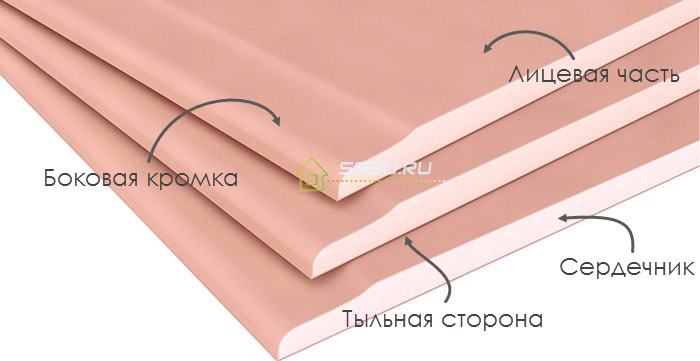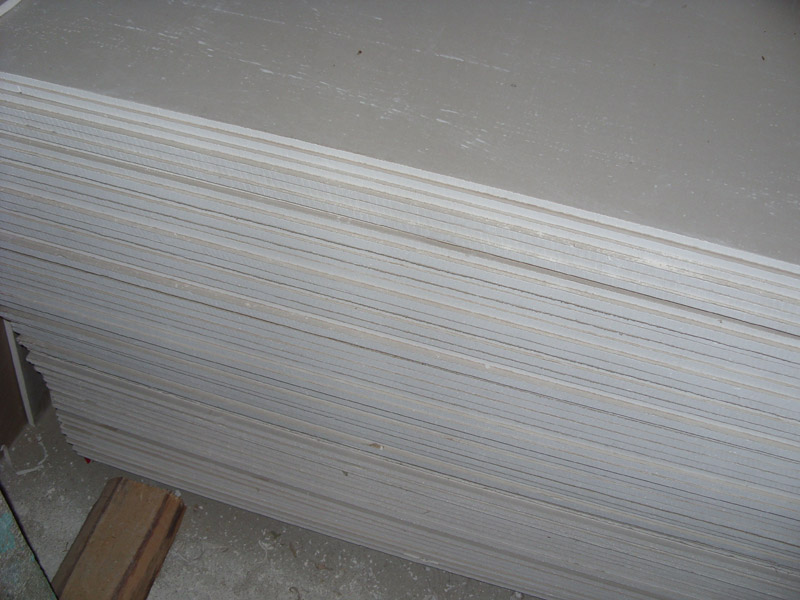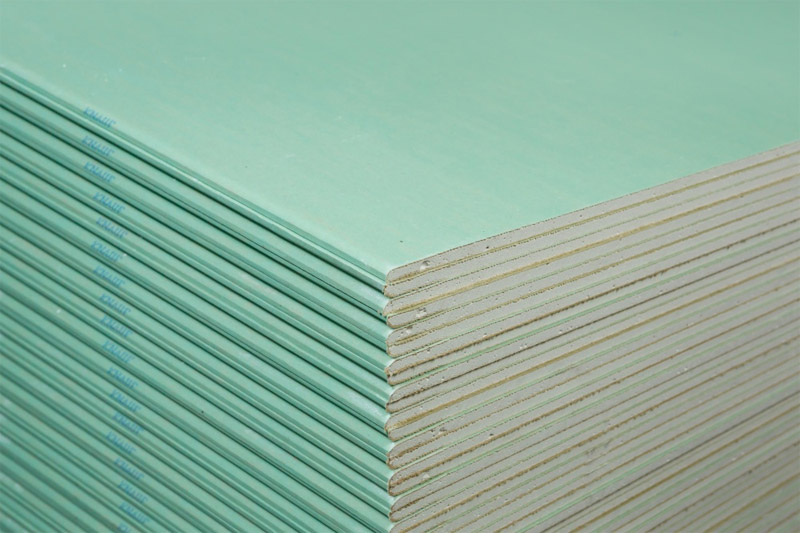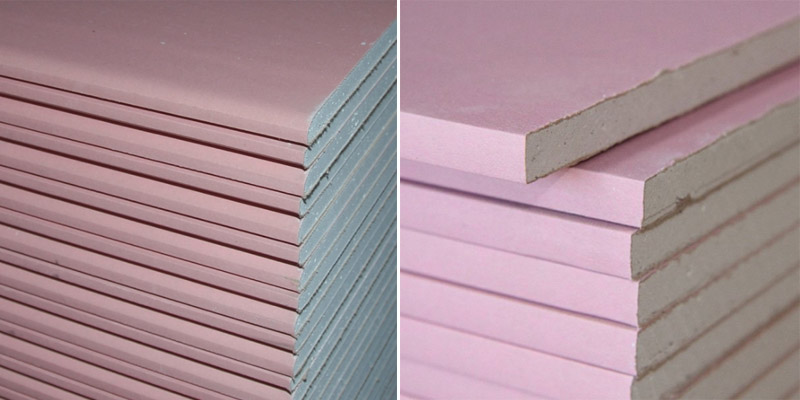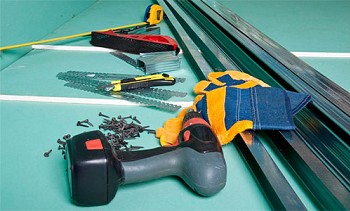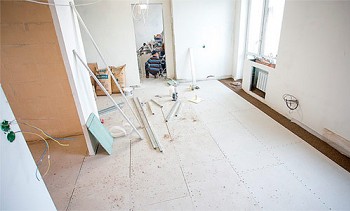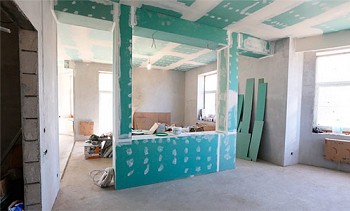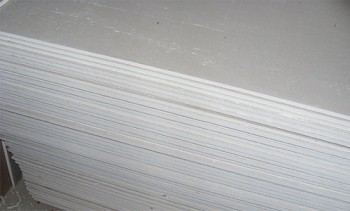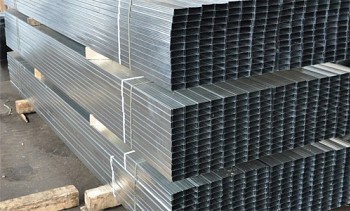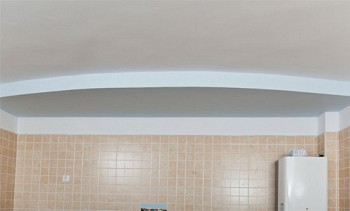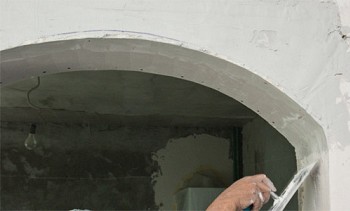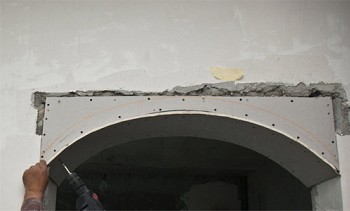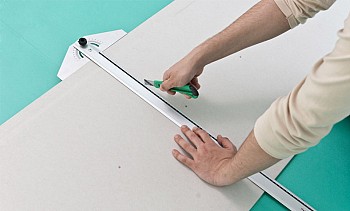Drywall is a covering of walls with ceilings, and boxes with slopes, and all kinds of figured designs created by the imagination of designers. And if at first this material had opponents who did not trust the new technology, then now they are practically gone. After all, years have passed, and the products assembled from GKL have been successfully tested for strength and durability. An important parameter is the size of the drywall sheet and its appearance. By choosing it correctly, you can minimize the amount of waste and save well. Next, read about how not to make a mistake with the sizes, choose the right type of GCR and distinguish quality material from a fake.
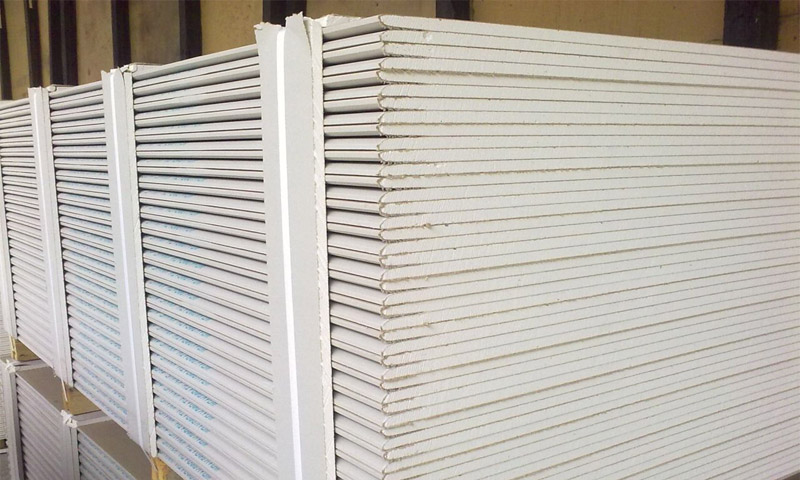
Content:
Drywall: General Information and Material Composition
With the help of gypsum plasterboard, construction is carried out according to "dry" technology, and it is these sheets that serve as the basis for the structures. And all other elements are used for their installation, connection and decoration. Each gypsum plasterboard consists of a gypsum flat core framed by cardboard on both sides and along long edges.
The cardboard used, despite its small thickness, has increased strength. It makes the sheets stiff enough, and the core made of gypsum with special additives can vary in composition to achieve certain goals. For example, it can make GCR moisture resistant, not afraid of fire, intensively absorbing noise.
Types of drywall and their application
Studying the nomenclature of drywall of various brands, it can be noted that manufacturers are guided by general principles. They proceed from the requirements for structures and existing structures that exist at the moment. Most manufacturers produce several basic types of drywall sheets used in various fields. The most popular of them are GKL and GKLV. More details - further.
Drywall Standard
It is also called building (or basic). Such plates can be lined with walls, sheathed ceiling and wall frames made of wood or metal. Basic gypsum boards are also suitable for intricate designer designs. Restrictions on the use: indoor use only (provided that the humidity is normal). For finishing work in the apartment, this type of GCR is most often used. It is easy to distinguish by the light gray color of the cardboard.
Drywall Drywall
This material, which is labeled GKLV, is used in those rooms where the humidity is medium or high. Special modifiers have been added to the gypsum core, due to which moisture absorption is sharply reduced. In addition, the fungus does not settle in such drywall. Therefore, it is used for work in bathrooms and kitchens, in attic dwellings, on balconies and balconies, where there is heating.
Slopes are also made from moisture resistant plates. And if you apply waterproofing of a coating type, then you can wall them in the shower or pool. It is worth noting that it is not necessary to apply GKVL only where it is damp. The standard size of moisture-proof drywall and its increased strength make it possible to use it for sheathing any structures in an apartment or house. The color of the facing board of these boards is green.
Drywall Drywall
This material (labeled GKLO) is similar in functionality to the two previously described - it is processed and bent in the same way. Thanks to special additives, the gypsum core of such gypsum board can withstand high temperatures twice as long.Thanks to this feature, smoke and fire cannot spread quickly. For wet rooms, there are special brands of fire-resistant drywall.
GKLO is used for the construction of partitions for fire-fighting purposes, and they also sheathe cable ducts, ventilation, mines, steel structures. You can use fire-resistant sheets even when you need to isolate a separate room in the room. As a rule, they use this material in offices, enterprises, and public premises. Cardboard lining has a light shade. Some manufacturers make it red - for example, Rigips (gypsum board brand RIGIMETR FIRE-Line PLUS).
Drywall Design
This material has other names: arched, flexible. It was invented for the construction of complicated structures in which it is necessary to bend parts with a small radius. For example, it can help with the installation of arched elements or a complex suspended ceiling. Flexible gypsum boards have a small thickness - from different manufacturers it varies from 6 to 6.5 mm. In addition, the core is reinforced with a fiberglass mesh, which can go in several layers.
The structures are sheathed with two layers of such sheets. During installation, you do not need to prick or moisten drywall - everything is done in a "dry" way. If there are special fire safety requirements, flexible GFL sheets manufactured by Giprock can be used. They have high fire resistance.
Durable Drywall
This material (reinforced) is designed to withstand heavy loads. For example, you need to hang something heavy on the wall - the fasteners will not fall out of the reinforced sheet. Apply such drywall in any room. A number of manufacturers produce reinforced boards with additional properties. For example, they can be fireproof or waterproof. As an example, GKLVU from the company Giprok and Diamant from the company Knauf. The last manufacturer still has products called “massive”. They have a thickness of 25, 20 and 18 mm. At us, they are also usually referred to as high-strength plates.
Special Purpose Panels
In addition to the above GCR, there are types of drywall designed for specific conditions. For example, these are materials that:
- They have enhanced noise-proofing properties;
- have protection from the wind (it is needed when finishing external walls);
- conduct heat well (they make the lining of a warm floor or ceiling with cooling);
- have the property of a heat insulator;
- include several layers (vapor barrier, polymer foam layer);
- X-ray screening;
- able to absorb electromagnetic waves.
There are other varieties of drywall - for example, "Aquapaneli", which produces the company Knauf. Their core, made not on gypsum, but on a cement basis, has a fiberglass frame on both sides. This building material is suitable even for exterior facades, as it is well protected from most negative factors.
And another example worth mentioning is gypsum fiber (abbreviated as GVL). Such a gypsum base plate with the addition of cellulose fibers consists. It is very tough and durable, not exposed to fire and has a flat surface. Thanks to this, a primer is not required before finishing. Gypsum fiber sheets are used in many cases - for example, when installing a dry floor, during outdoor works (including for assembling structures of frame houses). You can use them in those rooms where it is damp.
Types of Drywall Edges
Almost all brands of drywall are distinguished by a trimmed cardboard edge along the length of the side of the sheet. It usually has a smaller thickness towards the edge, which makes it possible to patch up these places when joining sheets, and to use paper, fabric or fiberglass for reinforcement. It turns out a smooth and durable surface. On the wrong side of the drywall sheets there are symbols that make it clear what type of edge is used in this sheet.
 |
PC - edge straight configuration. |
 |
UK is an edge that is thinner on the outside than on the inside. |
 |
PLC - an edge that is semicircular on the outside. |
 |
PLUK - hem semicircular and thinned from the outside. |
 |
ZK - an edge rounded on both sides. |
When plating in several layers (as well as for technical areas), such a chamfer is an excess - it is better to choose sheets with a straight edge. A refined edge should be chosen only for finishing with subsequent puttying.
Drywall Sheet Sizes
Length
The length of the standard size of the drywall sheet is 2, 2.5 and 3 m. However, there are manufacturers who produce sheets of 1.5, 2.7, 3.3 and 3.6 m length. In addition, if necessary, you can cut drywall directly at the factory, ordering your own sizes.
If you need to wall the entire wall to the ceiling, then it makes sense to buy long sheets. This will result in fewer seams (they won’t be horizontal at all). And jumpers do not have to set. But if you have ceilings of 2.7 m, and the length of the sheets is 3 m, then it makes no sense to purchase them. After all, there will be a lot of waste, and there are a lot of fuss with long heavy plates. You won’t be able to do without assistants. Before buying three-meter sheets, be sure to check whether they will go through the door of the entrance and apartment, as well as into the elevator. Sometimes it will be preferable to place an order for several sheets of different lengths - everything is decided individually.
Standard length of drywall sheet: 2; 2.5; 3m.
Width
This parameter is usually standard - 1.2 m, which is why the racks for the frame have a pitch of 0.4 or 0.6 m. Now convenient and lightweight sheets of small format have appeared on sale, whose width is half that (half) , and the length is 1.5 or 2 m. They fit well in a passenger car, they can be mounted alone, but it is better to use them on small planes. Otherwise, too many seams will work out. Flexible drywall is also narrow (GKLD brand from Giprok company has a width of 0.9 m).
Standard width: 1.2 m.
Thickness
The thickness of the drywall sheet is 6, 9, 12.5 mm. Options are 6.5 and 9.5 mm. Reinforced and fireproof plates can be produced in the thickness of 15, 18, 25 mm. Thin (6 mm) sheets are used for the manufacture of arches and other similar structures. If the radius of bending is large, it is unprofitable to take them - after all, flexible drywall is expensive. It is required twice as much - after all, products from it are made two-layer.
Lightweight sheets with a thickness of 9 mm are designed for ceilings, as they do not deform in the space between the profiles. They are not suitable for walls - not so durable. However, for ceilings, experienced craftsmen prefer to take sheets thicker - 12.5 mm (wall). They are quite flexible and durable, they showed themselves well when mounted on a profile with a pitch of not more than 0.6 m. This drywall thickness is the most popular, and it is better suited for the ceiling, as experience has shown. It is better to screw into such sheets and self-tapping screws, and the lamps on them hold on tightly. For walls, they can be mounted in several layers - so it turns out more reliable and stronger.
The most popular drywall sheet thickness: 6; nine; 12.5 mm.
Instructions for the selection of drywall
Now we will tell you how to choose drywall. Arriving at a store or market, you should carefully inspect the FCL for quality. However, well-known reliable brands usually do not fail buyers, but they also sometimes produce defective lots. But the drywall will have to drive in transport after manufacturing and lie down, and lie in the warehouse, and in different conditions. Sometimes sellers simply dump sheets on the street under a canopy or store them in a damp warehouse.
If you put pallets with gypsum plaster on top of each other, the core may crush, deformation of the sheets occurs, scratches and dents form. And sloppy movers, carelessly dragging long sheets, damage the cardboard lining. As a result, a lot of marriage appears, which an inattentive buyer may not see.
Therefore, try the following:
Tip 1. Get drywall at a major outlet. There he certainly will not lie for a long time.
Tip 2. Look at the warehouse, see the storage conditions. If it is wet, do not pick up material.
Tip 3. When loading and unloading slabs, make sure that this is done carefully.
Tip 4. Check each plate for dents, scratches and other defects.
They can be like this:
- Outside and inside the sheet is wrinkled, corners are damaged - signs of core damage;
- Paper in the middle lags; inside, it is wavy;
- The core on the short side crumbles;
- The panel is curved horizontally or vertically;
- The thin edge of the edge is bent backward;
- The plate is not cut at a right angle (factory defect).
If you need a lot of material, you can make a trial purchase - one sheet. Cut it into strips with a knife and see if the core is homogeneous, if the cut is even, if there are any foreign inclusions. And in order not to make a mistake, take the products of reliable brands: Giprok, Knauf, Lafarge, Rigips.

